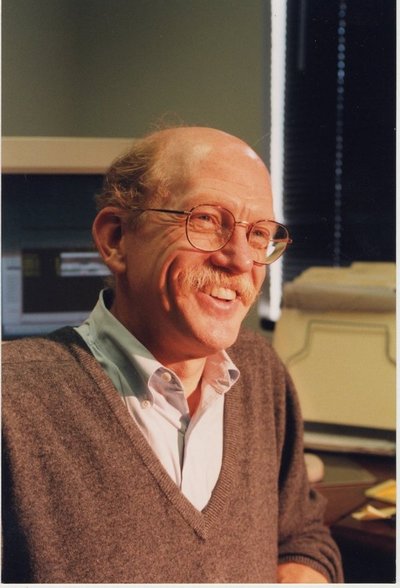February 2, 2006
Lowly worm a ‘perfect organism’ for genetic study
Once you hear Dr. Robert Waterston talk for a while about worms, you will never look at your garden or compost pile the same way again.
For living in that rich garden soil may be a nematode — a worm — called C. elegans, one that Waterston calls the “perfect organism” for genetic study.
Waterston, the William H. Gates III Endowed Chair in Biomedical Sciences and chair and professor of genome sciences, will give the next Science in Medicine lecture on Thursday, Feb. 16, at noon in Hogness Auditorium, room A-420 in the Health Sciences Center. He will discuss Automated Gene Expression Analysis at Single Cell Resolution in the Nematode C. elegans. The lecture is free and open to everyone.
“What makes C. elegans the perfect organism is that you can have a molecular description for any given process that goes on in that organism — that’s a big challenge,” Waterston said.
C. elegans is a nematode about one millimeter in length, barely big enough to be seen living in rich garden soil or compost heaps, where it gobbles down bacteria and lives happily, according to Waterston.
“It represents for us an intriguing level of complexity,” he said. “Our efforts are to get a much better precision on what’s happening in its development.”
Waterston was first introduced to studies of this worm in 1969 by Nobel Prize winner Sydney Brenner. Through his leadership of the project to sequence the genome of C. elegans, Waterston was the first to make complete sequencing of animal genomes a reality. In the years that followed, his contributions to large-scale DNA sequencing were central to the success of the Human Genome Project.
C. elegans is a simple but fascinating worm. It has just 959 cells and 302 neurons, much the same proportion as in humans, and only six chromosomes.
“Because it’s so small and finite, investigators have been able to completely reconstruct its nervous system. We know what neurons connect to other neurons by what synapses,” Waterston said.
“We can approach a level of understanding of this organism unheard of in almost anything else. We want to take advantage of that information to take a fine-grained look at the molecular level. We want to know for any given gene exactly what cell that gene is expressed in and when, and we want to be able to do this in as automated a fashion as possible.”
Waterston’s team is now able to automatically derive patterns of gene expression in C. elegans and can also look at and derive mutant patterns, when a gene is altered in its pattern, and decipher what has gone wrong
“It’s cool to be able to see the biology at that level,” Waterston said. “It’s fun to be able to do this and more broadly to watch how the genome is spurring on the drive to molecular understanding of the worm. This is powerful information.”
This information could have significant impacts on the study of human genetics, he said.
“The kind of fundamental understanding we are aiming at here has the potential to have an equally profound impact on our understanding of human development and the regulation and coordination of genes in development.”



